**Overview of Smart Wearable Devices**
Smart wearable devices are a category of technology that integrates into everyday wear, such as watches, wristbands, glasses, and clothing. These devices have been around for several decades, with early concepts and prototypes emerging in the 1960s, and more practical versions appearing in the 1970s and 1980s. The rise of wearable tech has marked a new era where human capabilities are extended through intelligent gadgets. These devices help users better understand their surroundings and their own health, enabling more efficient information processing with the help of computers, networks, and even other people. This leads to smoother communication and interaction.
The applications of smart wearable devices can be broadly divided into two categories: self-quantification, which focuses on tracking personal health and activity, and in vitro evolution, which involves enhancing human abilities through external tools.
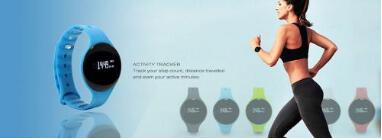
**What Are Smart Wearable Devices?**
**1. Smart Fitness Bands**
A smart fitness band is a wearable device designed to track real-time data such as physical activity, sleep patterns, and diet. It syncs with smartphones, tablets, or iPod Touches to provide insights that help users lead healthier lives.
The main body of the band is usually made from medical-grade rubber and memory foam, making it safe, comfortable, and stylish. Its design blends functionality with fashion, featuring a sleek look and multiple color options. The ends often have silver-coated metal caps instead of traditional snaps or buttons, adding a modern touch. Inside, it houses a lithium battery that lasts up to 10 days, along with a vibration motor and an accelerometer for motion detection. The small silver cap at the end acts as a settings button, while the other end features a 3.5mm jack for connecting to a phone.
Despite its compact size, the smart fitness band offers powerful features, such as step counting, distance tracking, calorie burning, and even advanced functions like sleep monitoring, waterproofing, Bluetooth 4.0 connectivity, and fatigue alerts. It’s not just a health tracker—it’s also a fashion accessory.
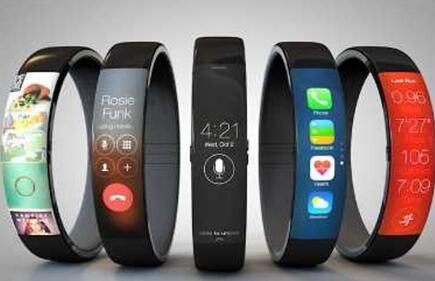
**2. Smart Watches**
A smart watch is a multi-functional device that runs on a smartphone operating system, allowing it to connect to the internet and perform various tasks. It can synchronize with mobile phones to manage messages, emails, photos, and music. In 2013, major tech companies like Apple, Samsung, and Google began launching smartwatches, marking the start of a new era in wearable technology.
Smartwatches typically feature an electronic display, camera, microphone, control buttons, and a wristband. They connect via Bluetooth to a smartphone, enabling users to answer calls, send messages, and access data. With the integration of big data, smartwatches can analyze user behavior and offer personalized experiences. They act as an extension of the smartphone, reducing the need to constantly check the phone.
Some models also include features similar to smart bands, such as heart rate monitoring and activity tracking.
**3. Electronic Socks**
Electronic socks are used in sports like Taekwondo, equipped with sensors that allow referees to score based on impact. These socks have large sensing areas that detect pressure and send signals to the scorer's system. They are expensive, costing around 30,000 yuan per pair, and must pass inspections before use.
These socks offer a comfortable running experience and accurate data tracking, similar to regular socks. They are made from soft fabric with embedded sensors that monitor foot movement during exercise. Some models, like SensoriaSmart, require a magnetic foot ring to enhance performance by measuring power and acceleration.
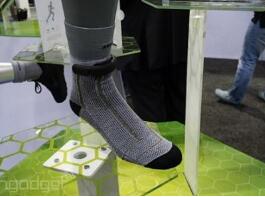
**4. Google Glass**
Google Glass is a head-mounted display that works with smartphones. It includes microphones, earphones, and a built-in camera on the left side, allowing users to take photos and send messages using voice commands. The battery is integrated into the frame, making it lightweight and modern.
When the user says “OK, Glass,†a menu appears above the right eye, offering icons that can be accessed via voice commands. Users can also control the device using a touchpad on the side or by nodding and shaking their head. Google Glass enables hands-free navigation, allowing users to chat, map locations, and take photos without touching a phone.
**5. Smart Fashion Clothing**
Smart clothing represents the future of fashion, blending technology with apparel. From shirts that monitor heart rate to jackets that play music, smart clothes are becoming increasingly popular. Companies are exploring ways to integrate LED lights, temperature control, and internet connectivity into garments.
At CES 2014, a Dutch designer introduced "Intimacy 2.0," a dress that changes color based on the wearer's emotions. Using smart foils and electronics, the dress reacts to emotional states, creating a dynamic and interactive fashion experience.
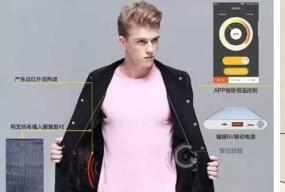
**Top Smart Wearable Device Brands**
1. **Fitbit** – Almost synonymous with fitness trackers.
2. **Xiaomi (Millet)** – A strong competitor in Asia, challenging Fitbit’s market share.
3. **Garmin** – Offers specialized wearables for sports like golf, swimming, and cycling.
4. **Apple** – Invested heavily in the Apple Watch, though sales faced challenges.
5. **Samsung** – Successfully entered the market and claimed a top spot in 2016.
6. **Chongzi** – A rising star in the wearable tech space, known for its affordability and innovation.
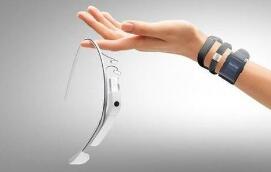
Wuxi Ark Technology Electronic Co.,Ltd. , https://www.arkledcn.com